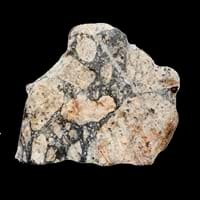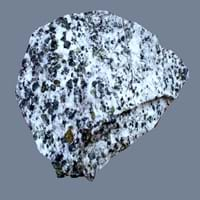Definition
Breccia is a rock consisting of angular fragments of stones which are cemented by finer calcareous material
Carbonatite is intrusive or extrusive igneous rock which is defined by mineralogic composition, consisting of greater than 50 percent carbonate minerals
Discoverer
Unknown
Unknown
Etymology
From Italian, literally gravel, Germanic origin and related to break
From any intrusive igneous rock, having a majority of carbonate minerals
Class
Sedimentary Rocks
Igneous Rocks
Sub-Class
Durable Rock, Hard Rock
Durable Rock, Soft Rock
Group
Not Applicable
Plutonic
Other Categories
Coarse Grained Rock, Medium Grained Rock, Opaque Rock
Coarse Grained Rock, Fine Grained Rock, Medium Grained Rock, Opaque Rock
Texture
Brecciated, Clastic
Granular, Poikiloblastic
Color
Beige, Black, Blue, Brown, Buff, Green, Grey, Orange, Pink, Purple, Red, Rust, White, Yellow
Black, Brown, Colourless, Green, Grey, Pink, White
Durability
Durable
Durable
Appearance
Layered, Banded, Veined and Shiny
Dull, Banded and Foilated
Interior Uses
Countertops, Decorative Aggregates, Entryways, Floor Tiles, Flooring, Homes, Hotels, Interior Decoration
Decorative Aggregates, Interior Decoration
Exterior Uses
As Building Stone, As Facing Stone, Paving Stone, Garden Decoration, Office Buildings
As Facing Stone, Garden Decoration
Other Architectural Uses
Curbing
Curbing
Construction Industry
As Dimension Stone, Construction Aggregate, Landscaping, Roadstone
As a Flux in the Production of Steel and Pig Iron, As a Sintering Agent in Steel Industry to process Iron Ore, As Dimension Stone, Cement Manufacture, for Road Aggregate, Making natural cement, Manufacture of Magnesium and Dolomite Refractories, Unknown, Unknown
Medical Industry
Not Yet Used
Taken as a Supplement for Calcium or Magnesium
Antiquity Uses
Artifacts, Sculpture
Artifacts
Commercial Uses
Creating Artwork, Gemstone, Jewelry
An Oil and Gas Reservoir, As a Feed Additive for Livestock, Gemstone, Metallurgical Flux
Types
Collapse Breccia, Fault Breccia, Flow Breccia, Pyroclastic Breccia, Igneous Breccia and Impact Breccia
Not Available
Features
Available in Lots of Colors and Patterns, Clasts are smooth to touch
Available in lots of colors, Generally rough to touch, Is one of the oldest rock
Archaeological Significance
Monuments
Not Yet Used
Not Yet Used
Famous Monuments
Not Applicable
Not Applicable
Sculpture
Used
Not Yet Used
Famous Sculptures
Data Not Available
Not Applicable
Pictographs
Not Used
Used
Petroglyphs
Not Used
Used
Figurines
Used
Not Yet Used
Formation
Breccia is a clastic sedimentary rock which is composed of broken fragments of minerals or rock which are cemented together by a fine-grained matrix and it forms where broken, angular fragments of rock or mineral debris accumulate.
Carbonatites are intrusive or extrusive igneous rocks which are defined by mineralogic composition consisting of greater than 50 percent carbonate minerals and are formed due to low degrees of partial melting of rocks.
Mineral Content
Calcite, Clay, Feldspar, Phosphates, Quartz, Silica
Ancylite, Apatite, Barite, Fluorite, Magnetite, Natrolite, Sodalite
Compound Content
Aluminium Oxide, Ca, NaCl, CaO, Iron(III) Oxide, Potassium Oxide, Sodium Oxide, Silicon Dioxide, Titanium Dioxide
CaO, Carbon Dioxide, Sodium Oxide
Types of Metamorphism
Burial Metamorphism, Cataclastic Metamorphism
Burial Metamorphism, Contact Metamorphism
Types of Weathering
Biological Weathering, Chemical Weathering, Mechanical Weathering
Biological Weathering, Chemical Weathering, Mechanical Weathering
Types of Erosion
Chemical Erosion
Chemical Erosion, Wind Erosion
Grain Size
Medium to Coarse Grained
Medium to Fine Coarse Grained
Fracture
Uneven
Conchoidal
Porosity
Less Porous
Less Porous
Luster
Dull to Pearly
Subvitreous to Dull
Cleavage
Non-Existent
Not Available
Toughness
Not Available
1
Specific Gravity
2.86-2.87
2.86-2.87
Transparency
Opaque
Opaque
Density
0 g/cm3
2.84-2.86 g/cm3
Resistance
Heat Resistant, Impact Resistant, Pressure Resistant, Wear Resistant
Heat Resistant, Pressure Resistant, Water Resistant
Deposits in Eastern Continents
Asia
China, India, Kazakhstan, Mongolia, Russia, South Korea, Uzbekistan
China, India, Kazakhstan, Mongolia, Russia, Uzbekistan
Africa
Namibia, Nigeria, South Africa
Namibia, Nigeria, South Africa
Europe
Austria, Denmark, Germany, Great Britain, Netherlands, Norway, Poland, Sweden, Switzerland, United Kingdom
Austria, Denmark, Germany, Great Britain, Netherlands, Norway, Poland, Sweden, Switzerland, United Kingdom
Others
Greenland
Greenland
Deposits in Western Continents
North America
Barbados, Canada, Mexico, Panama, USA
Canada, USA
South America
Brazil
Brazil
Deposits in Oceania Continent
Australia
New South Wales, New Zealand
New South Wales, New Zealand
All about Breccia and Carbonatite Properties
Know all about Breccia and Carbonatite properties here. All properties of rocks are important as they define the type of rock and its application. Breccia belongs to Sedimentary Rocks while Carbonatite belongs to Igneous Rocks.Texture of Breccia is Brecciated, Clastic whereas that of Carbonatite is Granular, Poikiloblastic. Breccia appears Layered, Banded, Veined and Shiny and Carbonatite appears Dull, Banded and Foilated. The luster of Breccia is dull to pearly while that of Carbonatite is subvitreous to dull. Breccia is available in beige, black, blue, brown, buff, green, grey, orange, pink, purple, red, rust, white, yellow colors whereas Carbonatite is available in black, brown, colourless, green, grey, pink, white colors. The commercial uses of Breccia are creating artwork, gemstone, jewelry and that of Carbonatite are an oil and gas reservoir, as a feed additive for livestock, gemstone, metallurgical flux.










